How to clean the pots before using them again (and why it is so important to keep your plants healthy)
¿Sabías que reutilizar macetas sin desinfectarlas es peligroso para tus plantas? Descubre por qué + cómo limpiarlas bien
When you have to reuse a pot, what do you do?
Surely you give it a little water to remove the remains of dirt (or dust, if it has been stored for a long time).
Is this so?
Well be careful: before transplanting a plant into a used pot, you have to clean it very thoroughly. Rinsing it’s not enough.
Otherwise, you could put the health of your plants at risk.
That is why in this article we are going to explain how to clean your clay or plastic pots and leave them as new.
Let's go there.
Why is it so important to clean your pots when you reuse them?
We said that a used pot can pose a risk to your plants if you don't clean it well.
And it is that in the pots can accumulate small insects, bacteria, and even fungi that, if they are not eliminated, will end up colonizing the next plant that you plant in it.
Hence, the importance of washing them properly.
“But if the plant that it had on her before wasn't sick, do I have to worry?”.
Indeed, you should. Because it could be microorganisms that have remained in the pot that did not affect the species that you had in it before, but that will harm the new plant.
But worry not, because this will not happen to you if you follow the advice that we are going to give you now.
How to clean and disinfect clay and plastic pots
In addition to the remains of soil and microorganisms that may remain on their surface, older pots tend to end up covered with lime.
Many customers ask us if this is dangerous for their plants. And the answer is no.
However, the reality is that this encrusted lime is not very aesthetic.
Therefore, below we are going to explain:
- How to remove lime from your used pots.
- How to disinfect them before refilling them with soil.
The process is very similar whether you have clay or plastic pots, although there are slight differences.
We are telling you more about this.
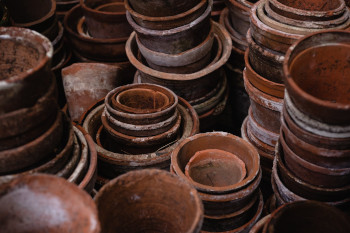
1. Brush the surfaces of the pot to remove dirt.
The most common thing is that your pot still has traces of soil and dirt. Therefore, the first thing we have to do is remove the largest debris.
To do this, prepare a basin with hot or warm water and submerge the pot in it.
The water will soften the remnants, and you can easily remove them with a stiff bristle brush. In addition, this way you can also remove some slightly encrusted lime deposits.
If your pot is made of clay, try not to rub too hard to avoid chipping the enamel.
Do not worry if after this process there are still lime deposits, because we will remove those now.

2. Immerse the pot in vinegar water.
If the tap water in your area is very hard (it has a lot of lime), it is normal for your pot to be covered with highly encrusted white debris.
If this is your case, do not try to remove them by rubbing!
Not only will it cost you a lot, but in the case of clay pots you could end up damaging the paint.
Instead, prepare a new basin of water, but this time mix 1 part of vinegar for every 3 parts of water. Fill the bowl until it completely covers the pot and soak it in for 20 to 30 minutes.
It is very likely that when you do this, you will hear a hiss: this is a sign that the vinegar is working and dissolving the lime.
After that time, take out the pot, rinse it with water and use the brush again. You will see how it is immaculate and with the painting intact.
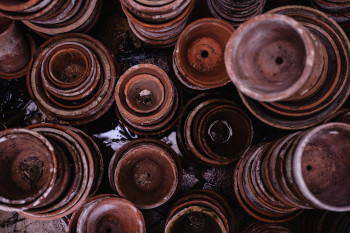
3. Disinfect the pot with bleach
You already know that vinegar is a good disinfectant. But even so, there are certain microorganisms that survive the mix.
That is why it is essential that you do not skip this step.
Now, the mixture will be 1 part of bleach for every 9 of water. Again submerge the pot completely, and this time it will be enough if you leave it for about 10 minutes.
After that time, take it out and rinse it well to remove any bleach.
In this way, you will have the assurance that the pot is completely disinfected and that no disease or fungus will be transferred to the plant you plant in it.
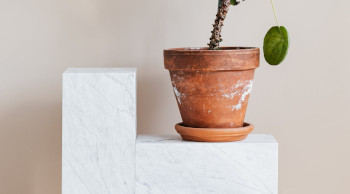
4. Let it dry in the sun
The last step is to put your plants in the sun until they are completely dry. In this way also evaporate the remains of vinegar and bleach that may have remained in it will (especially in the clay ones, which are more porous).
Once they are completely dry, your pots will be ready to be used again.
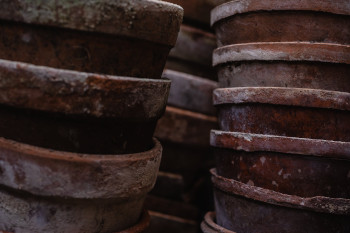
You already know how to disinfect your plastic and clay pots.
The entire process will take you very little time. And most importantly: it will save you more than one upset.
Put it into practice the next time you go to reuse your pots and make sure your plants always stay healthy.
And if you have any questions about how to take care of your plants, you already know that you can contact us.
We are here to help you enjoy your plants.

 English
English Spanish
Spanish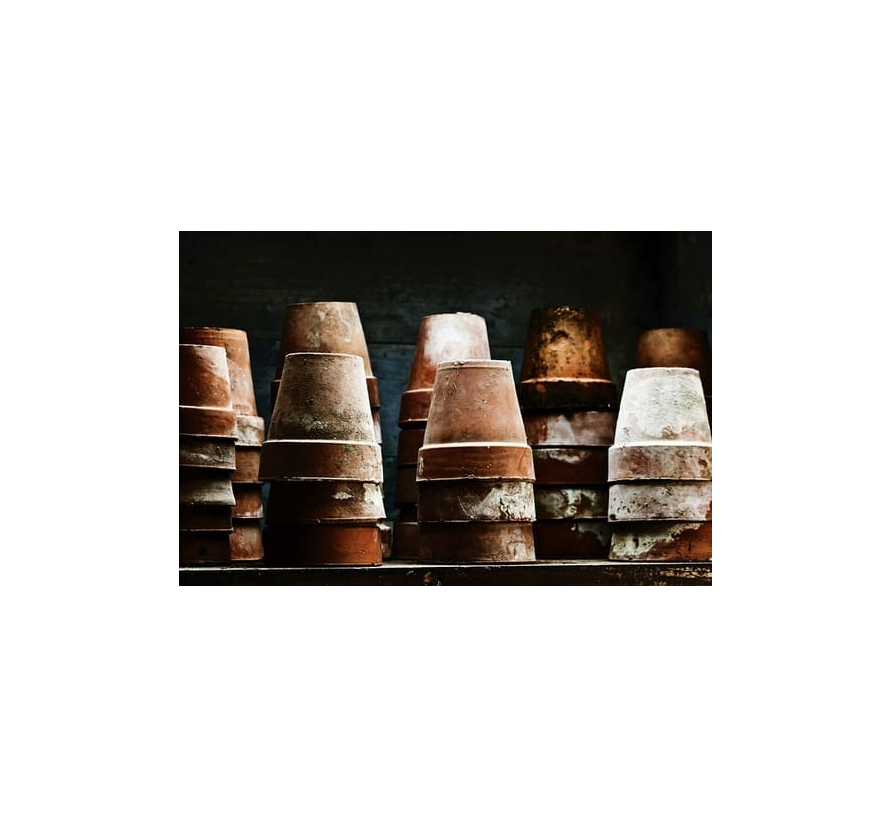
Comments
Leave your comment